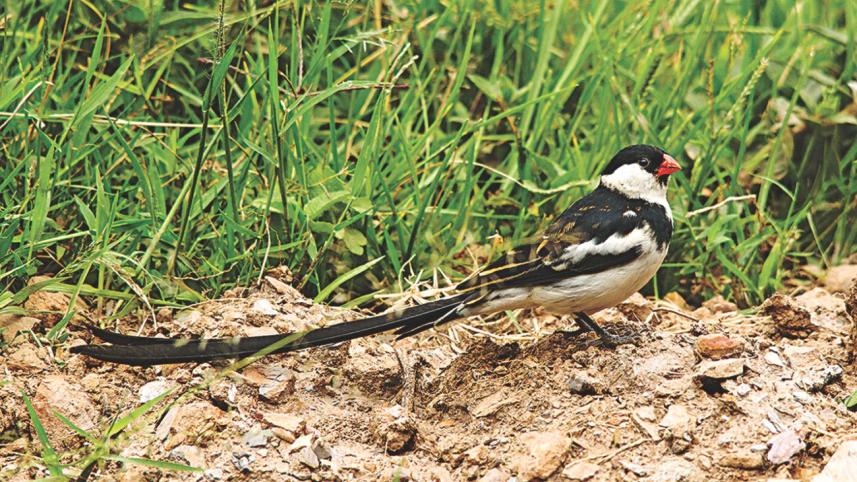A Tale of Tails

Some years ago I travelled to Uganda. From Kampala I went on a gorilla-tracking expedition to a remote region. When returning to the capital, I checked into a hotel in the countryside, went for a walk, and spotted a distinctive black bird. It had a very long tail. Back in the hotel I asked the owner about it. As first she was confused but as soon as I mentioned the tail she immediately identified it.
Birds have tails of all shapes and sizes that can serve many purposes. In the case of my whydah, I saw it during breeding season when males grow a tail longer than their bodies to attract mates. After breeding is over, they shed the long tail feathers.
Long, brilliantly colourful tails are the most famous attribute of the peacock. The family known as birds of paradise is also noted for its tails. Some of them are bright and vibrant; others can loop around into circles. For all these birds, males attract females with their tails; females look for males with healthy looking, bright tails so the offspring can be strong and healthy.
But mating is not the only reason for birds' tails. We usually associate wings of birds with flight, but we should remember that tails are also critical for flying. The bird uses its tail – which is basically a bunch of long, lightweight feathers controlled by muscles at their base – to steer its direction and pitch in flight. In fact, another name for tail feathers is rectrice, a word derived from the Latin word for helmsman.
While taking off, the tail adds to the wing's lift function. When perched, birds often use the tail for balance.
What about other uses of the tail? If you closely observe a woodpecker, such as the common red-and-yellow one, while it is travelling up and down a tree trunk, you will notice that it uses its tail, along with its feet, to brace itself against the trunk. This is particularly useful when it is hammering a hole in the tree. The feathers in a woodpecker's tail are extra-stiff to enable it to brace while vertically perched.
Snipes are birds of the fields that stay hidden. However, during breeding season, they circle overhead while making a drumming sound to attract a mate. For the longest time the source of the sound was a mystery but now we know it is the rattle of tail feathers beating against each other. Some male hummingbirds sing with their tails to attract a mate. They dive from great heights – in front of females - and pull up at the last minute with their tails spread out, making the sound.
A good tail to observe is our magpie-robin's (doel.) It often makes short flights and if you observe its flight carefully, you will notice that just before landing its tail spreads out in a beautiful (and easily visible) black and white pattern. That's when the bird uses its tail as a braking system. By flaring out downwards and creating drag the tail helps the bird slow down for landing. Once perched, it uses its tail, often flicking it, to maintain balance. When taking off, it spreads its tail for steering and additional lift.
Indeed, the tail of a bird has many tales to tell.
www.facebook.com/tangents.ikabir



 For all latest news, follow The Daily Star's Google News channel.
For all latest news, follow The Daily Star's Google News channel.
Comments